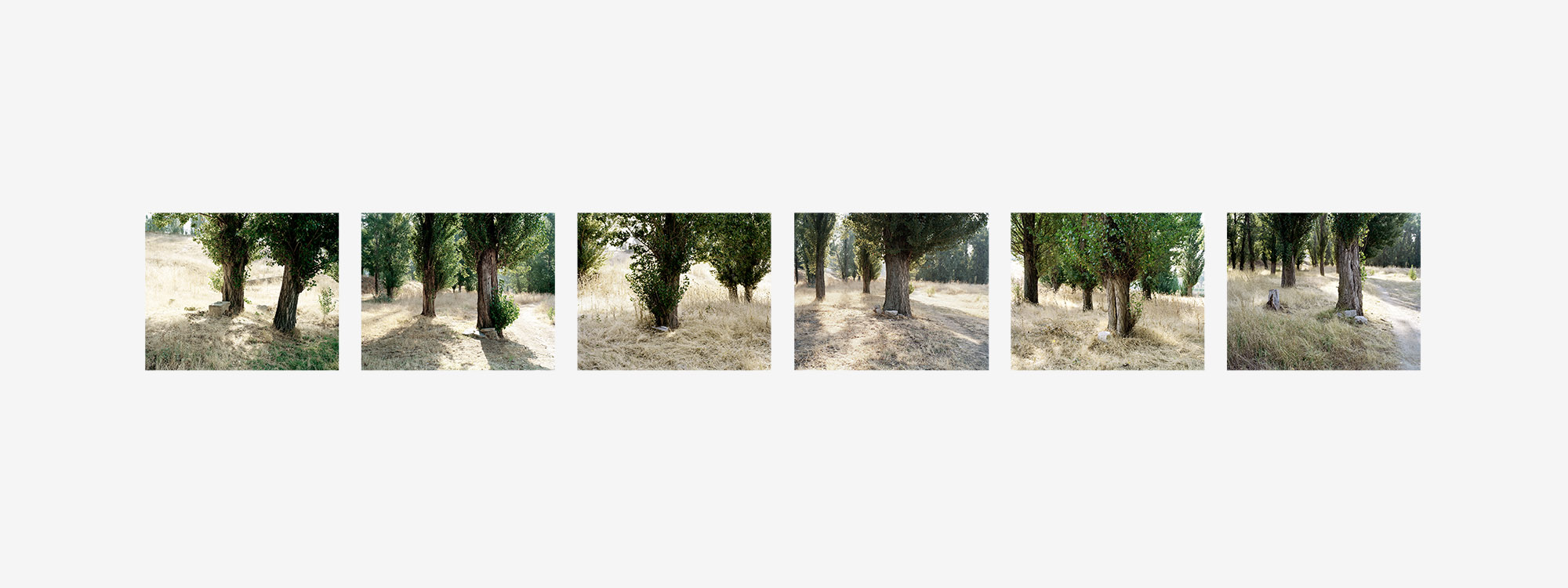© XAVIER RIBAS - Stones (2000) 6 C-Type prints size 50 x 60 cm. Edition of 6

[En] In William Faulkner's novel As I Lay Dying, a man sits on his porch, waiting. Made distraught by the storm and a promise he had made in life to his recently deceased wife, the man curses the road that runs right by his doorstep. He sees the road as a threat to the universe of the house, of domesticity and intimacy. He thinks the road shall bring to his doorstep the unknown and the undesired, while at the same time carry away all that the house keeps hidden, of life as well as death: "But it seems hard that a man in his need could be so flaunted by a road", exclaims this man locked up in himself, for whom the 'long ways' of the road and everything that needs to be always moving from one place to another is in conflict with the verticality and rooting of trees, of the house and of man. In the Poetics of Space, Gaston Bachelard writes about the poetic image offered by the house's intimate spaces, but he also writes about all spaces that invite us to come out of ourselves, about provisional refuges and occasional shelters. Images of intimacy, he says, are not just the product of our dreams of rest, but also of the dreams of the man that walks, his roads, his crossroads, his roadside benches: "all really inhabited space bears the essence of the notion of home". The stones under the shade of the trees, like the flowers by the side of the road, suggest a presence defined by absence. If the flowers mark a place of separation, of loss and passage, the tree, the stone and the shadow, in contrast, represent a meeting place, a place of recollection, of abiding.
----
[Cast] En la novela Mientras Agonizo de William Faulkner, la carretera es vivida como una amenaza para el universo de la casa, de lo doméstico, de lo íntimo. Uno de sus personajes se lamenta que la carretera le traerá al umbral de la puerta lo desconocido y lo indeseado, al mismo tiempo que se llevará de ella lo que la casa encubre, tanto de vida como de muerte: “Es duro que un hombre que se encuentra en necesidad sea perseguido por un camino.” Ésta es la exclamación de un hombre encerrado en sí mismo, para quien el estiramiento de la carretera y de todo lo que está pensado para moverse de un lado para otro entra en conflicto con la verticalidad y el enraizamiento del árbol, la casa y el hombre. Gaston Bachelard nos habla de la imagen poética que ofrecen los espacios de intimidad de la casa, y también de los espacios que nos llaman fuera de nosotros mismos, de los refugios efímeros y los albergues ocasionales. Las imágenes de la intimidad no surgen solamente de los ensueños de reposo, escribe Bachelard, sino también del ensueño del hombre que anda, del camino, de las encrucijadas, de los bancos: “Todo espacio realmente habitado lleva como esencia la noción de hogar”. Como las flores de las carreteras, las piedras, sugieren también una presencia ausente. Si las flores marcan un lugar de separación, de pérdida, y de pasaje, el árbol, la piedra y la sombra representan, en cambio, un lugar de encuentro, de estancia.
© Xavier Ribas (2000)
---

Stones # 1 to 6